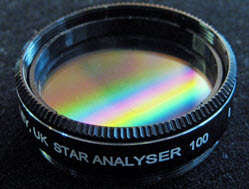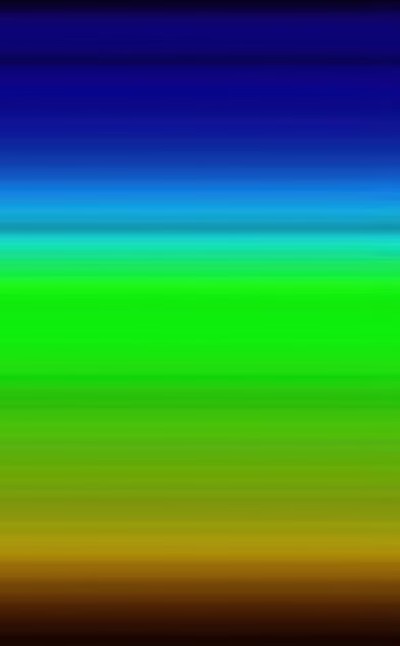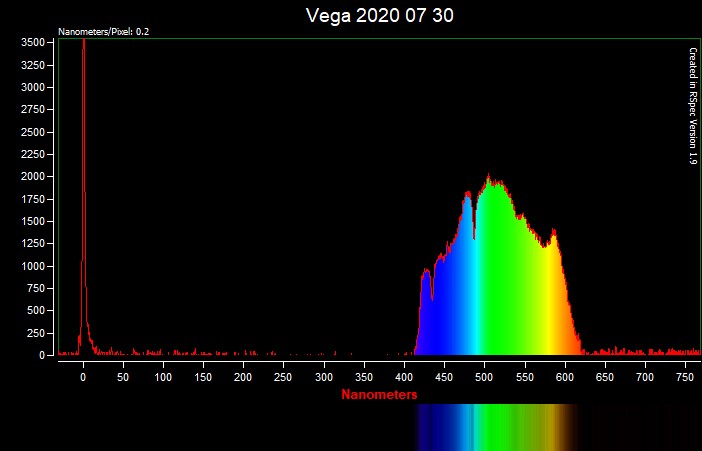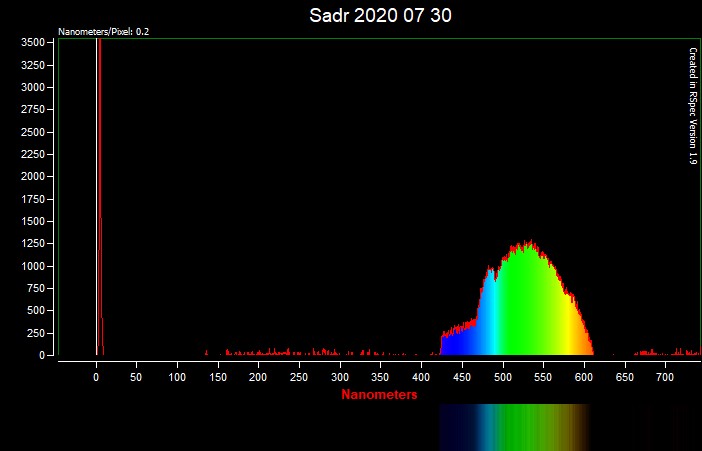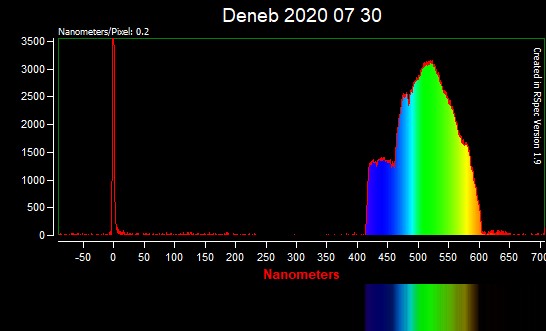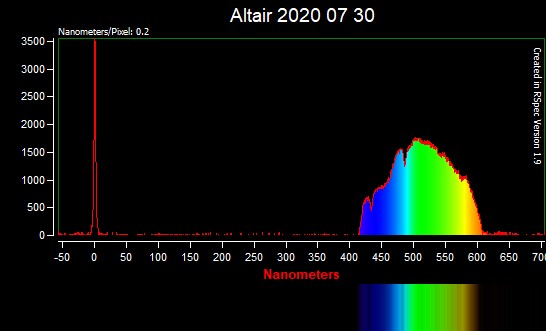Simple Stellar Spectroscopy achieved by viewing starlight through a fine diffraction grating (similar to a prism producing a rainbow) and analysing the diffracted image using RSpec software. Spectroscopy gives information on the type and composition of stars by analysis of the emission or absorption lines present in the resultant spectrum. This can be done mounting the diffraction grating as a filter on an ordinary digital camera and lens setup or a specific astronomical telescope.
The Star Analyser 100 is a diffraction grating with grooves that are spaced at 100 lines/mm. The grating is mounted in a standard 1.25″ filter cell and is protected on both sides with anti-reflection coated glass. Star Analysers can be obtained here https://rspec-astro.com/star-analyser/.
Examples below are my first few attempts…
